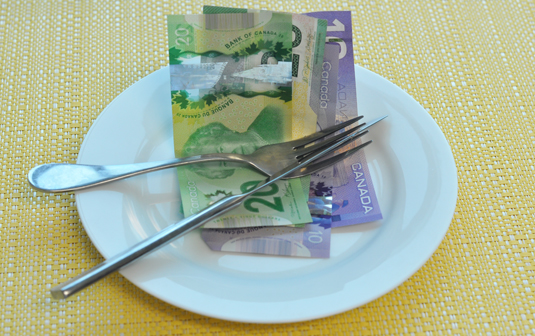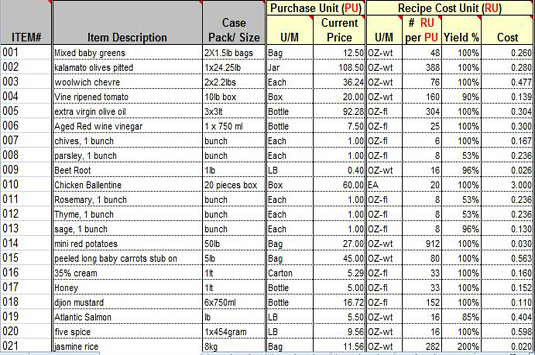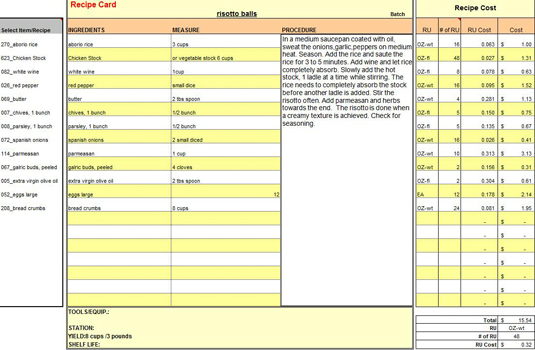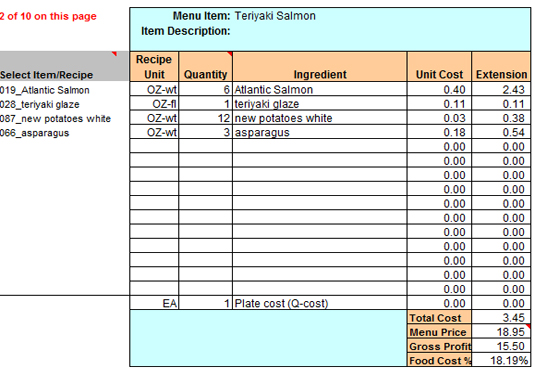Food Costing Resources

Establishments tend to have difficulty turning major profits due to the amount of money that is lost in the heart of the house, aka the kitchen. I think by now we all understand the importance of food costing, so I wanted this blog to be dedicated to the resources that are available to help you. Throughout my career I have helped establishments turn a profit in the kitchen, and this is how I’ve done it.

First off you need a food costing spreedsheet template. Most likely your foodservice distributor will have one, so check with them first. The one I used was downloaded from Restaurant Owner. The above photo is a snapshot of my master inventory list. Every single food item needs to be inputted. You will need to account for yield loss, so for fresh parsley and thyme I do not use the stems so I’ve given this a 53% yield. Even though I save most of these stems for stock, I still account for the stems as a loss in the master inventory. It’s always better to over-compensate when it comes to food costing. This has to be done for every ingredient. It takes a lot of time, and this is why most people avoid this or cut corners. However once it’s done, IT’S DONE!!! Then only small adjustments are needed as prices change, or when items are added or removed from the menu. By reading this master inventory list we can see that each ounce (oz) of mixed baby greens costs 26 cents and each ounce of Atlantic Salmon costs 40 cents.

The next step is creating standardized recipes. This is something that is crucial for both chain restuarants and independents. Standardized recipes not only allow for consistent preparation, but also help determine yield which is important for costing. The template should allow you to select ingredients from the master inventory list via drop down menus. Because the price per ingredient unit is automatically tranferred from the master inventory, the costing is automatically calculated as well. In this case, I know that each time I make rissotto balls I will yield 3 lbs of rissotto, which will make 48 x 1 oz portions. Each of those portions will cost 32 cents.

Once your standardized recipes are completed, you can start to build and cost your menu. This is actually the easiest part, since all the work was done previously in the master inventory and standardized recipe sheets. The menu coster allows you to take items from the master inventory list and the standardized recipe list and plug them in. So in this case I know that my Teriyaki Salmon will cost me $3.45. If I sell it for $18.95, I will have a food cost of 18% and a gross profit of $15.50. All of this was automatically calculated once I enter in my selling price. If I wanted to swap potatoes for rissoto balls, it could be done quickly, and I’ll know exactly what I should sell my menu items at, based on the targets I’m looking to achieve. No more guessing games!
Also check out iChef Mobile which allows you to cost menu items on the fly from your cell phone or tablet.
Until next time….. stay makin’ money my friends!



